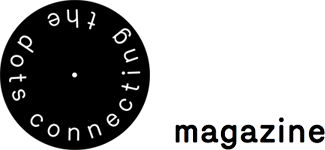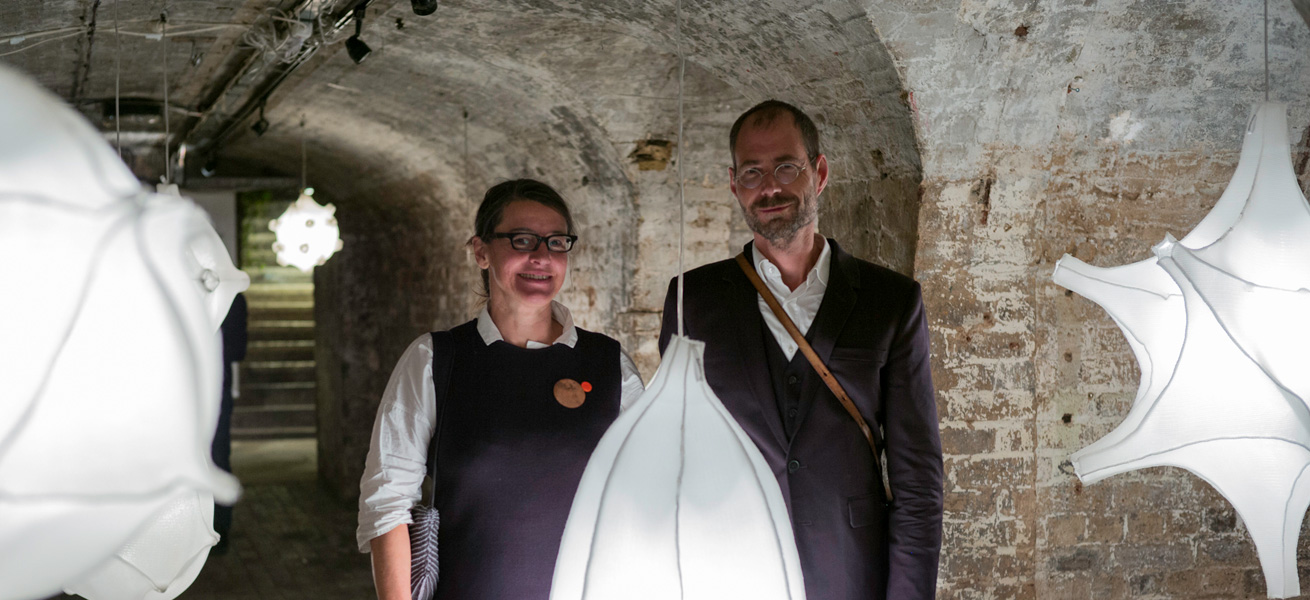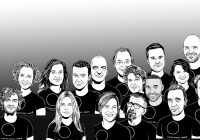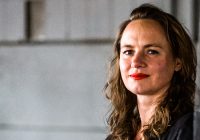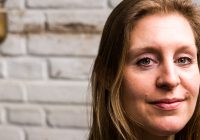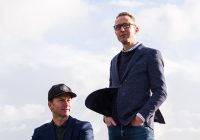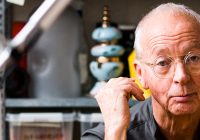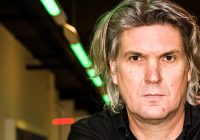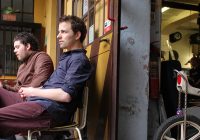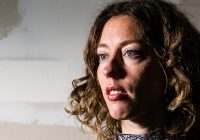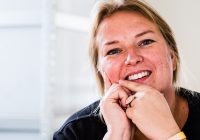Interview by Anna Bates
Bernotat&Co
Amsterdam based design studio Bernotat&Co is made up of partners Anke Bernotat and Jan Jacob Borstlap. They will present their collection of Radiolaria lamps at the London Design Festival this year.
Anna Bates: How did the Radiolaria Lights take shape?
Jan Jacob Borstlap: Our projects always stem from long-term fascinations. We’ve had this book by the German biologist and artist Ernst Haeckel – he published over 100 detailed illustrations of animals and sea creatures in his book called Art Forms in Nature, and we’ve had it on the bookshelf for a long time. Among the prints are many radiolarians – unicellular organisms that produce intricate mineral skeletons. We’ve wanted to use some of these illustrations as the basis for objects for a long time.
Anke Bernotat: We were working on a series called the Chair Wear project where we made clothes for chairs. We were using this special soft translucent material for two of the covers, and when we turned the material inside out at the seams the object looked voluminous and organic – just like Haeckel’s radiolaria. The material has this kind of quality. We intuitively saw that it would work with light. One project led onto another…
AB: What is this material? What are its characteristics?
JJB: It’s a 3D knitted polyester textile and it’s quite stiff so you can shape it. It’s a very breathable technical material and mostly it’s used as a spacer in applications where you don’t see it – like mattresses and car seats.
AB: The lamps glow in the dark – is this a property of the material or is it something you added?
Anke Bernotat: We added this so that when you turn off the lights you have this mystical glow – it builds this image of an underwater world.
AB: How do you apply it?
JJB: It’s a secret! It’s smart engineering in a way. It’s not that difficult – smart engineering usually means it’s quite simple.
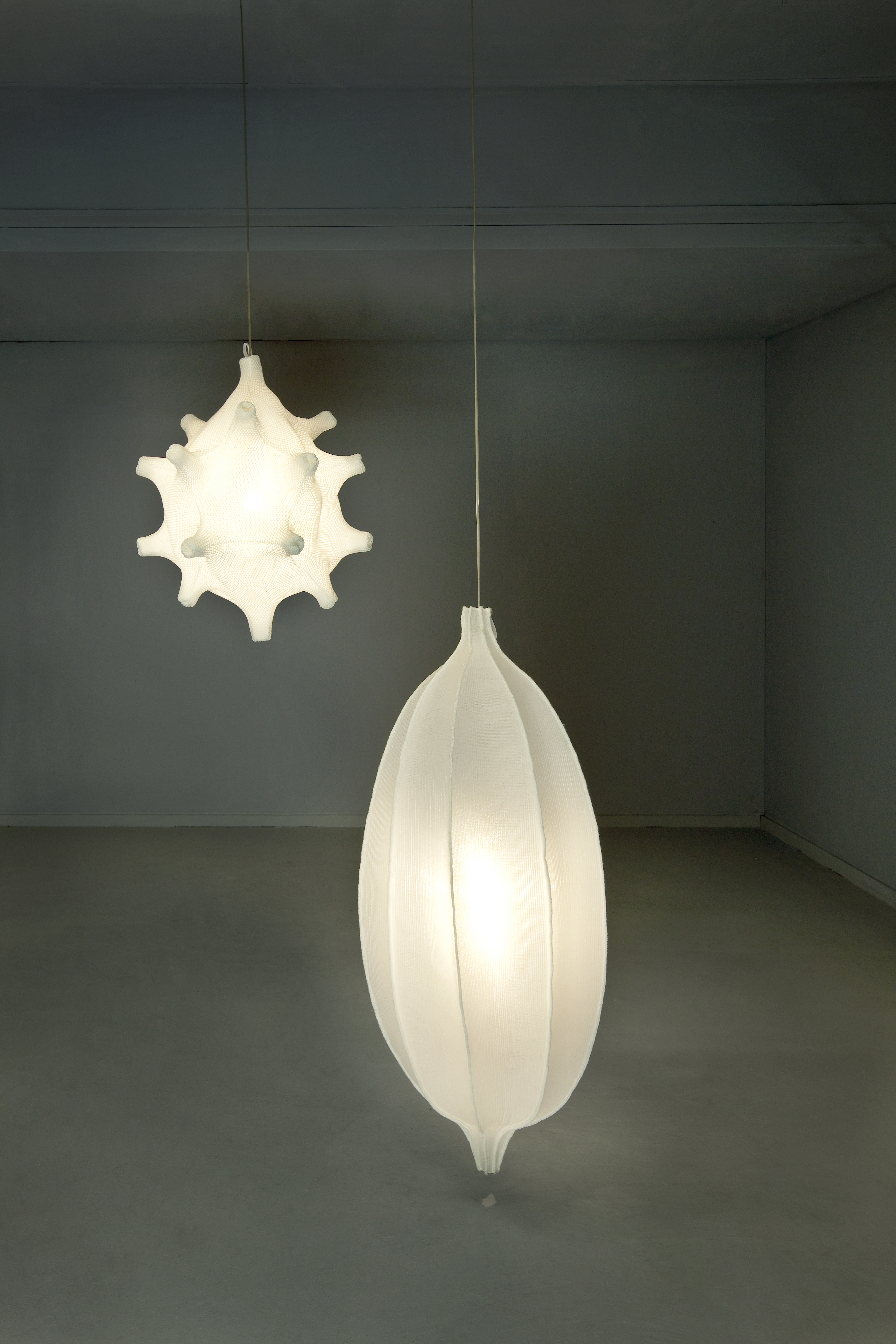
Radiolaria Lights. Photo by Marleen Sleeuwits
AB: How do you manipulate the material to make these complex shapes?
JJB: It’s funny you say they look complex, because the designs start with these identical geometric shapes: most of them are built up from triangles. We stretch the fabric a bit to make it different and then where all the triangle points meet you get a tentacle – like a sea anemone mouth. The parts are stitched together with a special sewing tool.
Anke Bernotat: The lamps have no inside structure – there is no wire, no support – so they are influenced by gravity, which we like, it gives them a kind of natural irregularity. Nature also works with very simple mathematical principles – but in the end you get something looking very complex. As an aside, working in this low-fi way is good because it makes the objects easier to repair.
AB: So is the sustainability of your products very important to you?
JJB: Yes, but our strategy is to develop sustainable aesthetics – aesthetics that aren’t trendy and won’t go out of fashion. Organic shapes – shapes based on nature – are a universal aesthetic, they are appreciated all over the world. This look always comes back and it is always appreciated. The lamps are also very light and they can be flat packed – they are their own packaging in a way. Actually they are so soft we don’t need extra filling in the packaging to protect the porcelain sockets in the mail. We think it is just a natural thing to thing about environmental issues like this when you are designing a product
AB: Will you expand the Radiolaria series?
JJB: No, I think we are happy with the collection as it is. But we’ll keep using this language for many other things.
Anke Bernotat: Our recent Chrysalis Bags are inspired by seeds, for example. We’re also working on a new series of lighting and a chair that continue the nature theme.
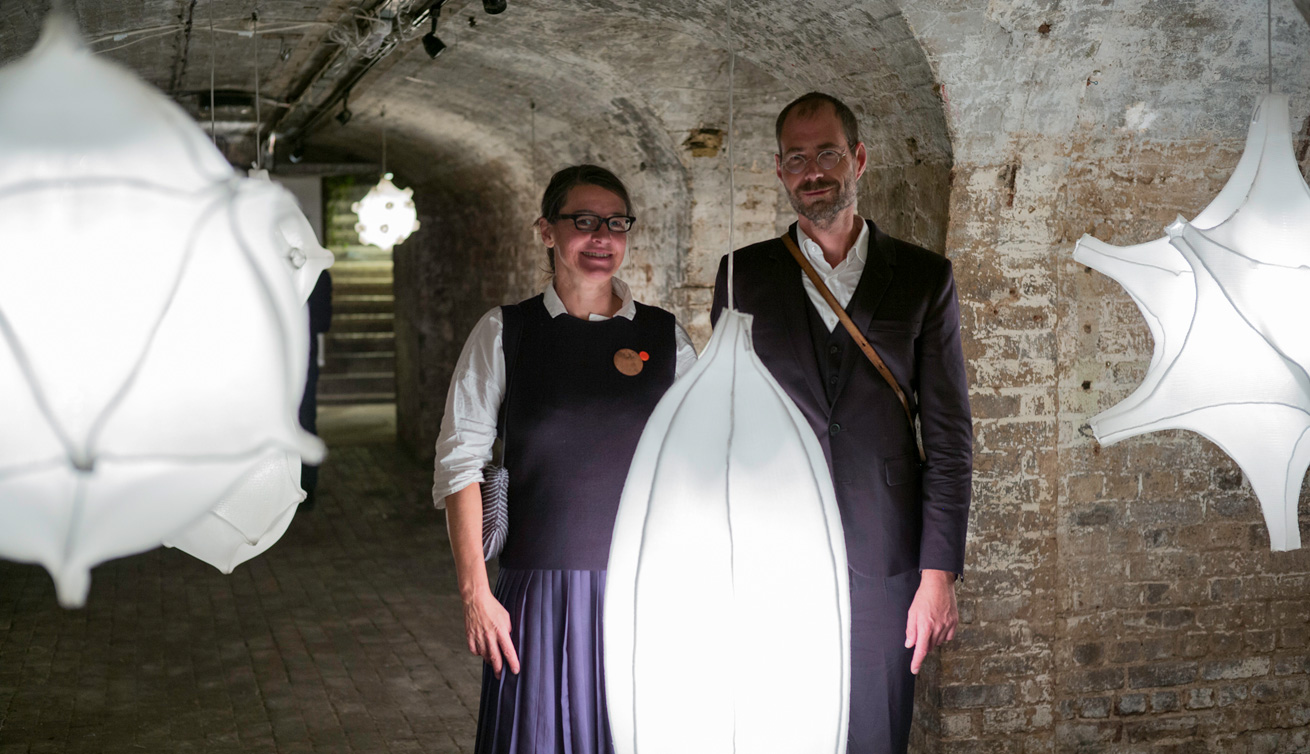
Anke Bernotat & Jan Jacob Borstlap. Photo by Marica Innocente
Radiolaria Lights by Bernotat&Co were part of the exhibition Enlightened Design II during the London Design Festival 21-24 September 2017 at The Crypt Gallery, Euston Road, London NW1 2BA. Click here for more information.
